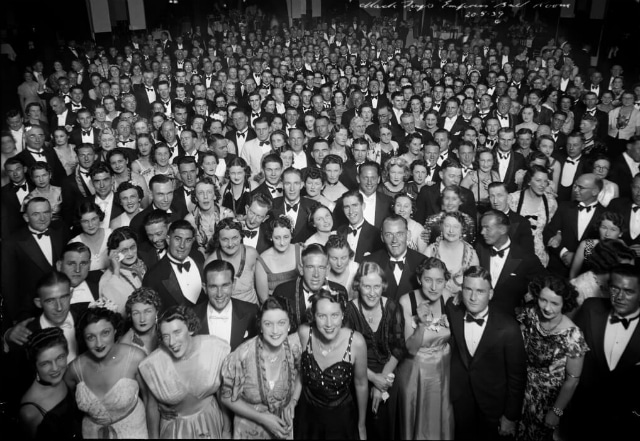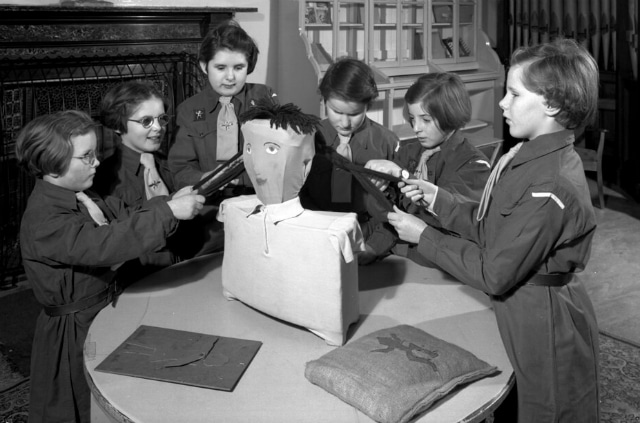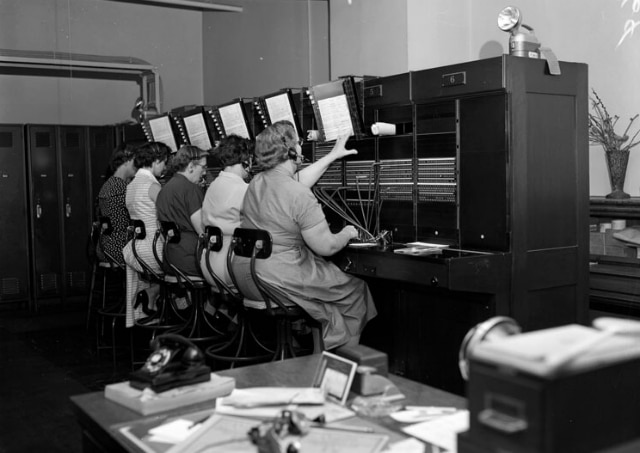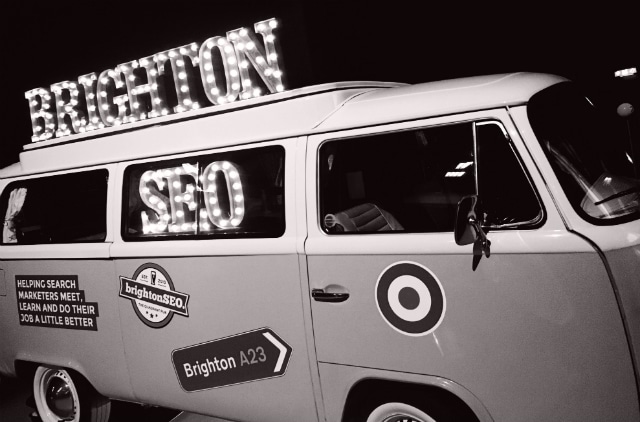How to encourage networking at events
Events and conferences are as much about networking (and socialising) as they are the sessions. Most attendees will only judge the event a success if they were able to connect with like-minded people and valuable contacts.
More often than not the focus for event planners is on the presentations, speakers and sessions, neglecting the all-important networking side of things. We’ve compiled these practical tips and advice to ensure that the social and networking element of your event is as successful as the sessions.
Planning a networking event the right way
Promoting interaction between event attendees starts long before the event takes place. In fact, you need to prime your attendee list and optimise the environment they will be networking in.
Enable pre-event online networking
- Create an online community where participants can connect. This can then be used before, during and after your event. LinkedIn is the ideal platform for this as attendees can spend time researching and scheduling meetings with people who are relevant to them and their business. You can also use Facebook events for a less formal approach.
- Creating a group on LinkedIn is simple, quick and flexible. It allows you to personalise the page with your own event branding. Once you’ve created your group, remember to promote this in your event marketing material, both on and offline.
- Kick off the conversation by posting a question or topic relevant to the event. Check out our guide to Using LinkedIn for Event Marketing for some tips.
Build your event around event networking apps
Event networking apps are another technology enabler that can be leveraged to increase attendee to attendee engagement. These apps can be used before and during the event so it’s worth considering an event app when you are in the planning stages.
- Some apps have LinkedIn integration, matchmaking facilities, name badge scanners and an activity feed which allow users to prioritise who they meet as well as to make the most of any networking opportunities available during the event.
- Other apps include game systems where points are awarded for everytime a networking conversation is scheduled. This is a fun way of incentivising users to interact with each other.
- Check out Event app platforms such as eventbase and SwapCard have affordable and sometimes free options.
Venue and layout arrangements
The environment you create is pivotal to facilitating interaction. Humans are highly attuned to their surroundings so if the venue or layout isn’t conducive to mingling, your attendees will find networking very difficult. When you are setting up the venue consider:
- Providing small standing tables for attendees to gather round during the break. These take up much less space than sit-down tables and encourage people flow.
- Use multiple seating configurations to help guests feel comfortable and to accommodate different needs.
- Segment your breakout space into a casual networking space and a quieter, more private space for people to conduct one-to-one meetings.
- Place tea and coffee stations away from main thoroughfares. These areas usually attract large crowds. Ensure that there is enough space for passers-by to move freely past the inevitable queues
- Use round tables for lunchtime (if applicable). Rectangular long tables tend to isolate people depending on where they are sitting

Master Pastrycooks Association of NSW Annual Ball via Powerhouse Museum
Prepare clear event name badges
Anyone who has attended an event before will arrive expecting to wear a name badge. This is key to initiating interaction between attendees as it allows them to identify people of interest from afar. When designing your event name badges, be sure to:
- Limit the information on your event name badges to include the person’s full name and company name
- Print information in a readable size and clear font
- If your event covers many different sectors, consider colour coding to differentiate. This way attendees can easily identify relevant people to network with.
If you’re planning on using an event app( more on this later!) it may also be beneficial to include a QR code. Ensure that this is clear and doesn’t compromise the clarity of the other information on the badge. This allows attendees and exhibitors to scan the code with their phones and save the important information without the need for exchanging business cards.

Members of the Royal Victoria School for the Blind Brownies 1962 via Tyne & Wear Archives & Museums
Maintain attendee interest throughout the day
Once the event is underway it’s important to have schedules and venue rules that facilitate networking. Networking for hours at a time can be intense so you need to deliver a paced program that doesn’t burn people out and keeps them interested.
Schedule regular breaks
The best way to encourage networking at your event is to give attendees the time and space to connect. It seems like an obvious point, but some conference planners are still focussing on delivering as many talks as possible within their event. Having regular breaks throughout the day actually helps attendees concentrate during the sessions and also gives them a good opportunity to network.
As a general rule, morning and afternoon coffee breaks should be half an hour and at least one hour for lunch. This gives attendees enough time to grab a drink, check their emails, visit the bathroom and, of course, network.
Consider offering a prompt by including these breaks in your event agenda as ‘networking break’.
Give attendees a 10 and five minute warning of when sessions are due to reconvene. If you are engaged in an in-depth conversation, it’s hard to keep an eye on the time.
Keep people in the venue
Give people a reason to stay in the venue during breaks by providing decent tea and coffee throughout the event. The stand out word here is ‘decent’. Don’t scrimp on costs; people won’t stick around for budget refreshments, even if they are free.
Go one step further by organising a free meetup after the event itself. Offer complimentary wine and nibbles alongside a more casual networking opportunity.
Promote interaction through group activities
Many people will see scheduled breaks as a chance to check their emails, catch up on Twitter or read the news. It’s not uncommon to see a crowd of people all glued to their phones instead of chatting with one another, especially if you have a lot of inexperienced event goers. As the event organiser it’s up to you to encourage networking.
One idea is to arrange informal talks with industry experts and event speakers in small groups over lunch. These talks add extra value to your events and group similar attendees together, therefore creating the perfect platform for networking.

City telephone room via The Library of Virginia
Promote networking skills
Networking is a learned art and every event will attract a mix of experienced and novice networkers. Some people will feel totally comfortable introducing themselves to strangers while less experienced or introverted attendees might find the experience quite daunting.
As an organiser, it’s down to you to make sure that everyone who has paid to attend the event benefits equally from the experience. You should therefore actively seek to equip everyone with the right tools so that they can get the most out of the event.
Provide new attendees with tips
Younger attendees may not have much experience attending events, let alone networking. Send an email a week before the event with tips on how to make the most of their networking time. Networking etiquette is key. It’s not about showing off or hard selling but being a good listener. There are plenty of online resources on networking etiquette that you can use and it will make a huge difference at no extra cost. Common pointers to include could be:
- Introductions
- Body language
- Breaking into a group conversation
- Being approachable
- Dressing for the occasion
- Business card etiquette
- Active listening
Employ creative networking ideas
Don’t be afraid to get creative and think outside of the box when it comes to encouraging networking. Try things out! This could be everything from a games area to demoing the latest technology to a yoga session.
You can organise a social competition that encourages people to take creative photos around a branded ‘photo stop’. Thanks to the popularity, a photo gimmick acts as a great ‘water cooler’, giving people a chance to meet whilst waiting in the queue. This can be anything from a branded event frame to something much larger such as this VW camper at Brighton SEO.

You could add posters to walls and tables in the breakout areas with a question that relates to the theme of your event. This gives inexperienced or introverted attendees a cue and discussion point on which to start their networking. Twitter walls are also good at encouraging debate.
Make your event stand out with lunchtime activities. These don’t have to be directly related to your event topic, but it does help. For example, a marketing conference or seminar could put on creative workshops such as painting, digital art or calligraphy. Many people find it easier to socialise or network in smaller informal groups.
20 Bedford Way – Event & networking venue in London
Looking for a venue for your next event? 20 Bedford Way boasts flexible breakout spaces including the Crush Hall interval bar with catering. Our flagship venue Logan Hall has adjoining spaces that can be utilised for networking. We are affordable and located in Bloomsbury with unrivalled transport connections. Speak to us today about how we can facilitate your next event. Call us on 020 7612 6143.
Main image Spoonbills via Powerhouse Museum Collection




